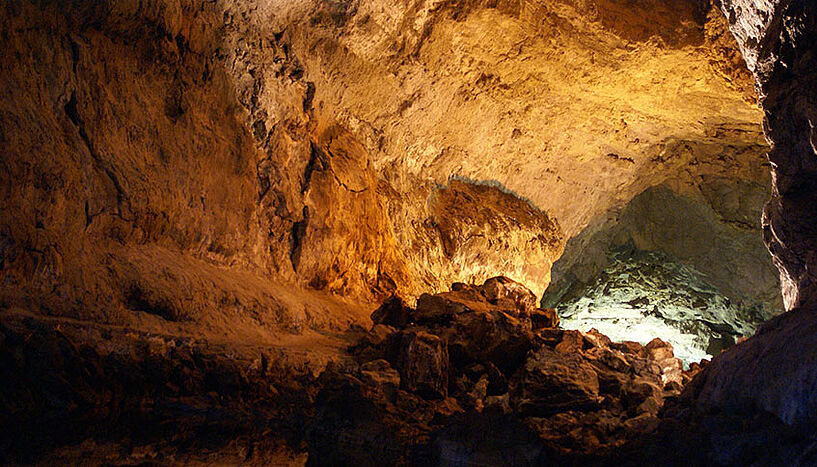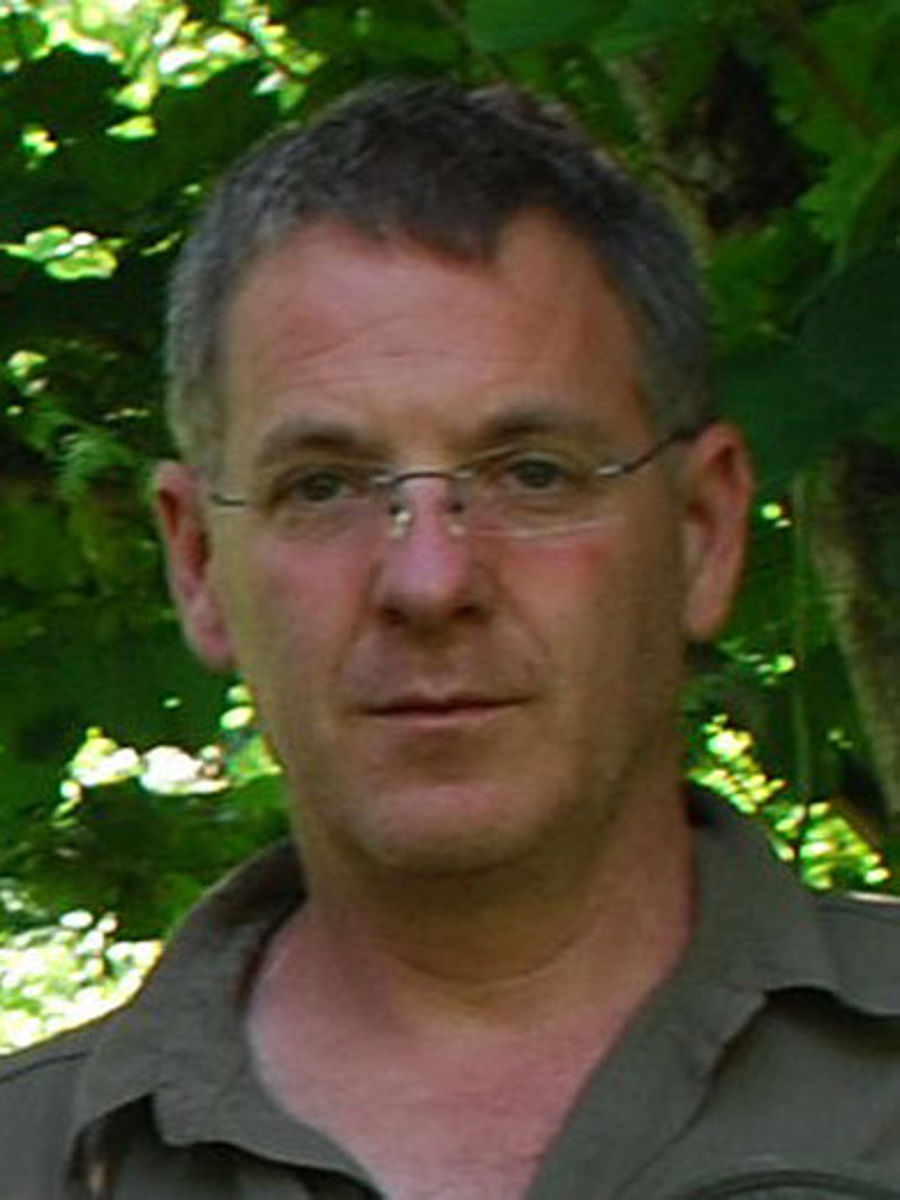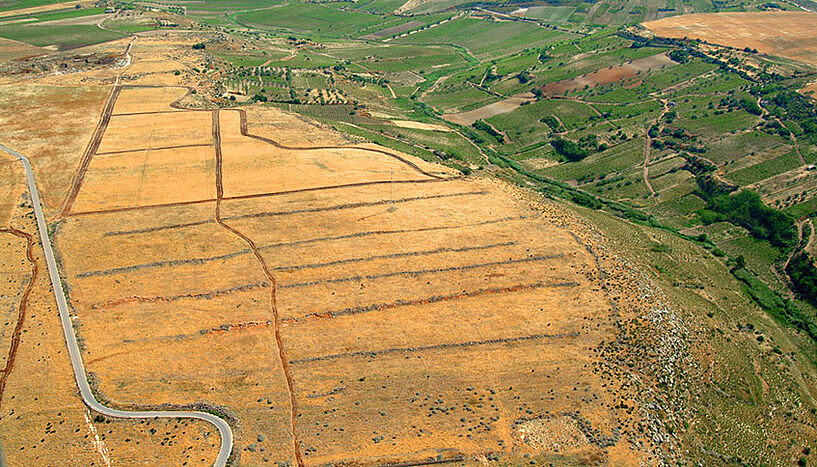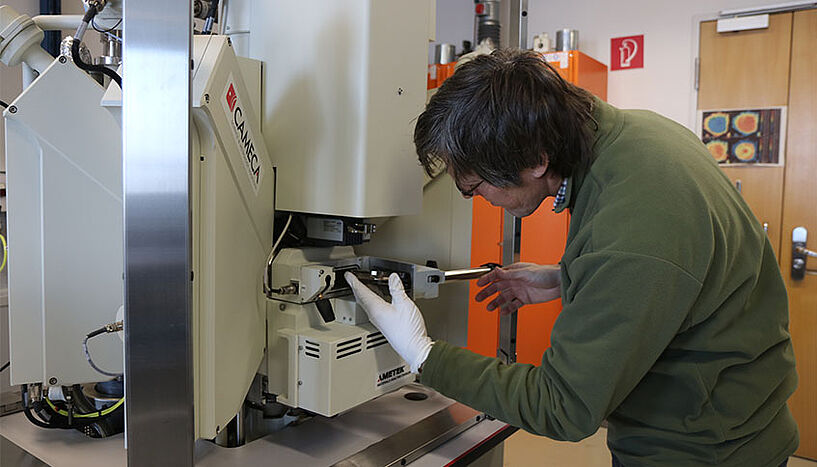Ron Pinhasi: Looking at ancient DNA
| 08. Januar 2018
Ron Pinhasi tries to find DNA wherever it is – included in cave stalagmites and sediments. (Photo: Flickr/diazda CC BY 2.0)
How did people look like, interact, migrate and bond 15,000 years ago? Anthropologist Ron Pinhasi finds answers to these and other questions by reconstructing past genes and genomes from ancient human DNA. uni:view interviewed the researcher on the occasion of his public lecture.
Examining human skeletons, selecting the best skeletal tissue and sampling teeth and bones – what might sound like the opening scene of a horror movie is Ron Pinhasi's daily business. The anthropologist analyses ancient DNA that he extracts from human remains. "What we do with DNA is counter-intuitive to what people think the DNA should tell us. For us, the DNA is a medium to get information about social processes that happened in the past: mating patterns, changes of population sizes, migration, physical growth, nutrition habits or kinship between individuals," the researcher explains.
Body's best bone
In 2014, the former ERC Grant holder developed a method for sampling human petrous bones for the analysis of ancient DNA which has transformed the field of ancient DNA. Since 2014, most researchers in the field have been using Pinhasi's method. "The only skeletal element which shows the – on average 300-400 times – higher endogenous DNA content is the inner ear's petrous bones when compared to other skeletal elements."
However, researchers in Pinhasi's team do not look for ancient DNA in teeth and bones only: Two years ago, they explored cave systems in the Republic of Georgia, and extracted ancient DNA from animals and plants from cave stalagmites which date back between 70,000-90,000 years. "We try to find the DNA wherever it is included in cave stalagmites and sediments," says Pinhasi.
The study of environmentally degraded bones
"You have to understand how environments interact with the human body after death." Hot and humid – in southern regions it is especially hard to obtain authentic ancient DNA. This is the reason why the majority of researchers focus on cool regions such as Siberia or Northern Europe where bones tend to preserve better. Ron Pinhasi is not one of those researchers: The anthropologist and his team like challenges – "otherwise it would get boring!" They are going to analyse the DNA of individuals that were buried near a volcano in Southern Europe: "Covered in ash and 70 degrees of heat – this kind of environmental conditions usually destroys any DNA. But we are going to try our luck anyway."
Filling a gap in our current knowledge
Pinhasi prefers to work with "bad" samples and focuses on the prehistory of regions such as Southern Europe, South Asia, East Asia, the Middle East, Central America, South America, Africa and Australia. "In these regions, we face major gaps in our knowledge about the prehistory in terms of genetics. I am trying to fill this gap by applying a range of novel ancient DNA optimisation methods which we developed for human remains," Pinhasi explains.
Researchers from the University of Cambridge and Ron Pinhasi from the University of Vienna recently conducted the first study to compare ancient and living female bones. The results show that routine manual labour of women during early agricultural eras was more arduous than the physical demands of rowing in Cambridge University's famous competitive boat clubs. The researcher says that the findings suggest a "hidden history" of women's work stretching across millennia. Read more (Photo: flickr.com/Ed Dunens CC BY 2.0)
Around the world
Fieldwork in Vietnam, China and India; studies in Canada, Cambridge and Leuven; lectureships in London and Dublin; initiating the first human ancient DNA laboratory in Ireland – the anthropologist has already travelled around the world. Now, he prefers that his team members carry out the fieldwork: "I prefer to focus on thinking, more than spending time on an airplane. Or maybe I am just getting older and do not have the energy anymore to go from place to place."

Ron Pinhasi built and run the first human ancient DNA laboratory in Ireland, in 2013 and recently, in November 2017, established a new ancient DNA laboratory at the Department of Anthropology, University of Vienna. His team has been working since 2013 on ancient DNA studies of >2500 prehistoric human skeletons (dated between 45,000-500 years ago) from across the world. (Photo: private)
Vienna – a great place for prehistoric research
In 2003, one of his journeys brought him to Vienna. For two years, he held a Lise Meitner postdoctoral position at the Natural History Museum in Vienna, examining the health status of early medieval Austrian populations. During this time, he fell in love with the city and he is now happy to be back in Austria – this time at the Department of Anthropology at the University of Vienna.
"The Danube region is a great place for prehistoric research, since it was a major corridor for interactions and movements. This is evident in the richness of the archaeological records and the network of universities," says Pinhasi. Besides the research environment in Vienna, he likes the local lifestyle: "It's a lot about drinking good coffee and eating well." (hm)
Ron Pinhasi's public lecture "Reconstructing human prehistory through ancient DNA genomics" takes place on 24 January 2018 at 5pm in the Small Ceremonial Chamber, University of Vienna, Universitätsring 1.
Downloads:
Antrittsvorlesung_Pinhasi_web.pdf
Dateigröße: 496,42 KB




